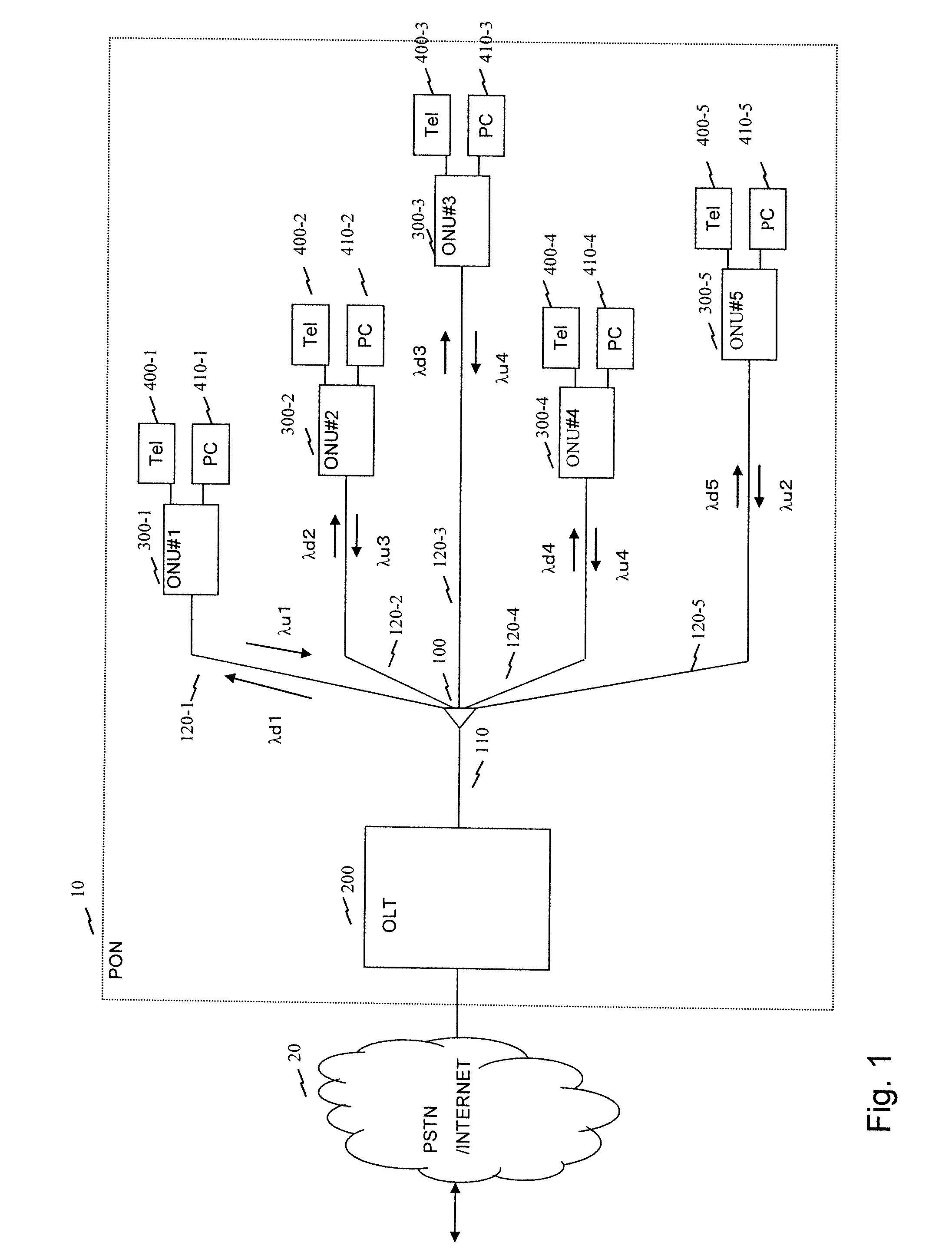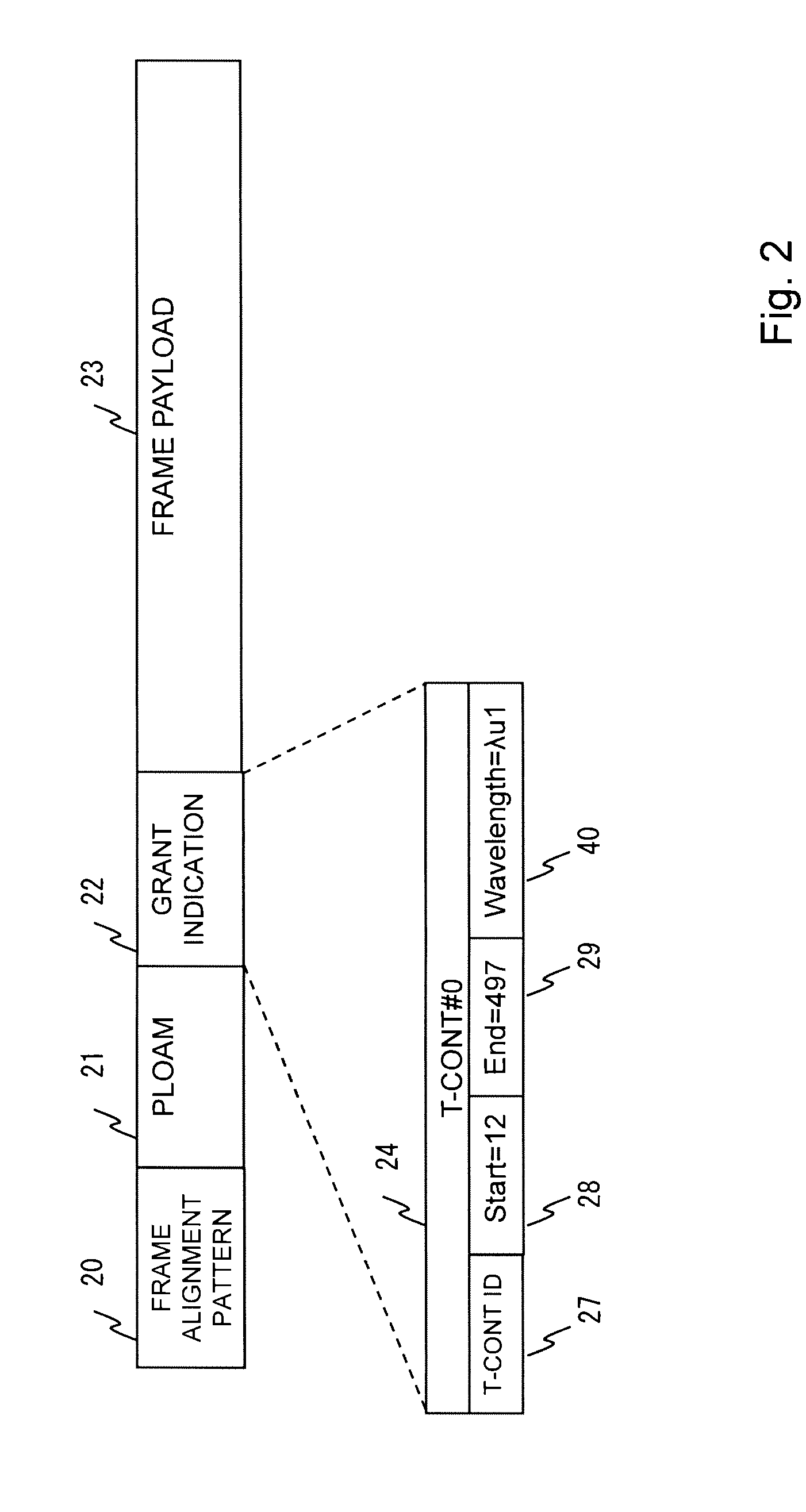Optical multiplexing terminating device, passive optical network system and method for allocating wavelength
a technology of passive optical network and terminating device, which is applied in multiplex communication, electrical equipment, electromagnetic network arrangement, etc., can solve the problems of optical signals outputted from the onus colliding and interfering with the trunk optical fiber, and achieve the effect of reducing the amount of power consumption
- Summary
- Abstract
- Description
- Claims
- Application Information
AI Technical Summary
Benefits of technology
Problems solved by technology
Method used
Image
Examples
Embodiment Construction
[0079]The configuration and operation of a PON according to this embodiment and a method for allocating wavelength for implementing this means will be described below in detail using the drawings.
[0080]1. Passive Optical Network System
[0081]In the following explanation, an PON configured to make the wavelength division multiplexing of data by allocating wavelength to each of five ONUs connected to an OLT is supposed, in which the wavelength allocated to downlink data from the OLT to each ONU is one of allocating statically a unique wavelength (λd1, λd2, . . . , λd5) to each of the ONUs, and the wavelength allocated to uplink data from the ONU to the OLT is one of dynamically allocating the wavelengths (λu1, λu2, λu3, λu4) capable of transmitting data of 100 Mbit / s (correctly 103.68 Mbit / s and the length of time slot is 1620 bytes), 500 Mbit / s (correctly 518.4 Mbit / s and the length of time slot is 8100 bytes), 1 Gbit / s (correctly 1036.8 Mbit / s and the length of time slot is 16200 byt...
PUM
 Login to View More
Login to View More Abstract
Description
Claims
Application Information
 Login to View More
Login to View More - R&D
- Intellectual Property
- Life Sciences
- Materials
- Tech Scout
- Unparalleled Data Quality
- Higher Quality Content
- 60% Fewer Hallucinations
Browse by: Latest US Patents, China's latest patents, Technical Efficacy Thesaurus, Application Domain, Technology Topic, Popular Technical Reports.
© 2025 PatSnap. All rights reserved.Legal|Privacy policy|Modern Slavery Act Transparency Statement|Sitemap|About US| Contact US: help@patsnap.com



